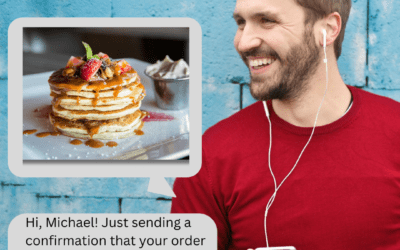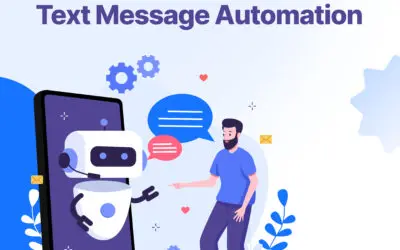Analysis of the Throughput
The speed at which SMS messages are sent is measured in terms of the number of message segments sent per second (MPS). An SMS that contains more characters and/or uses a character encoding that is different from GSM-7 may utilize higher message throughput. The maximum number of characters that can be contained inside a single message segment is 160. In the past, Twilio’s MPS for United States long code numbers were limited to a standard of one MPS per number, and this limit was shared by all mobile carriers. In accordance with the newly implemented A2P 10DLC service, this fee will be adjusted. From this point forward, the MPS throughput will be based on the sender’s Trust Score as well as the type of message Campaign being used (use case).
What is Meant by “Trust Score”?
During the process of registering a brand with The Campaign Registry (TCR), the third party that is in charge of administering the new registration system for US wireless carriers, a number called a Trust Score is given to the brand. When Twilio receives an A2P Customer Profile registration for US 10DLC communications, we then forward this information to TCR for assessment. Twilio will also submit the Brand for “secondary vetting,” which assigns a score on a scale from 0 to 100 and grants access to a higher US MPS by default. During the process of registering your brand, a reputation algorithm will examine a number of particular factors that are associated with your business, after which it will issue a “Trust Score.” When it comes to messaging throughput, the higher your overall trust rating is, the better (MPS).
Additionally, do keep in mind that Trust Scores are not dynamic and that T-Mobile customers should expect limits on the number of messages they can send and receive each day.
Appealing an Inaccurate Trust Score
The following are some of the causes that can lead to poor trust scores:
- Discrepancies in the information that you provided in your A2P registration, such as providing a different address from the one that is associated with your official business registration number (e.g. EIN).
- A limited product distribution area
In general, ratings will be lower for firms that are smaller and/or have a less significant business presence.
Twilio will do our best to offer assistance on probable causes or fixes for a low Trust Score if you obtain one. If your score is low, you may have received a low Trust Score. In the event that this pertains to you, please send an email to [email protected] with the Account SID that is associated with your A2P registration.
If it has been less than 45 days after you received your score, the appeal is free of charge. A secondary vetting charge of $40 must be paid for trust scores that were obtained more than 45 days before the appeal request in order to proceed.
How is throughput (in MPS) distributed across the A2P 10DLC network?
Every single one of your registered campaigns (use cases) with Twilio is allotted a maximum MPS that is predetermined. This MPS is shared across all wireless carriers in the United States and Canada, as well as the long code numbers that have been assigned to your campaign. You will still be subject to the same MPS restriction regardless of whether you opt to send messages over a single number to a particular carrier or break up messages across a collection of local numbers to send them to various carriers.
A “Mixed” or marketing type Use Case may obtain a higher MPS for the same Trust Score than a “Specific” Use Case, which is what carriers refer to as a “Declared” Campaign.
The Impact on the Flow of MMS Messages
MMS throughput on Twilio via long code numbers has not altered as of July 2021; rather, it continues to be limited according to each Twilio parent Account SID.
In the future, we anticipate that improvements to A2P 10DLC may also have an effect on MMS throughput; however, we do not currently have specifics. When new information becomes available, Twilio will revise this article to reflect any changes to MMS throughput that may have occurred. No, the throughput changes that are being discussed in this article will not affect Toll-Free SMS, and it will not be subject to the new rules for campaign registration either. By default, a toll-free number in the United States offers three multipoint contact options (MPS) targeting all carriers in the United States and Canada.
When sending campaign messages to Canada from the United States using a messaging service that is registered with a US A2P 10DLC use case, the messages will be transmitted at a rate of 9 MPS for each cell carrier in Canada. This limit has been established to ensure that throughput constraints imposed by Canadian carriers are not exceeded.
Sending messages to non-US countries is otherwise unimpeded.
A2P 10DLC’s Current Message Throughput
As of the 15th of December 2021, the throughput of your long code numbers toward AT&T and Verizon are to be determined by the Trust Score you receive. T-Mobile is still in the process of putting the finishing touches on the implementation of the message transmission throughput described in the tables below.
At this moment, messages directed toward T-Mobile consumers are being processed in the same manner as they have been up until now, at a sending rate of 1 MPS per Twilio +1 phone number. However, once your Campaign is registered, messages submitted via that Campaign will get routed toward mobile subscribers of AT&T and Verizon in a manner that is determined by both your Trust Score and the type of Campaign you are running.
Current limits of A2P 10 DLC is the title of a dedicated support post that Twilio has created to document this and other limitations that are currently in place. We will continue to revise the article as new restrictions are implemented or old ones are eliminated.
Use Cases
Declared use case signifies that you have selected one particular use case that is not related to marketing (examples: 2FA, Account Notifications, etc.).
Mixed and Marketing-Related Use Cases
Customers that want to send messages for several use cases from the same set of numbers can register for a Mixed / Marketing use case. This use case can also be registered for customers who want to send messages for marketing purposes. The throughput levels that are allotted for Mixed / Marketing use cases are distinct from the throughput levels that are provided for Declared use cases.
Please be aware that in addition to the “Mixed / Marketing” use case, there is a separate Campaign use case identified as “Low Volume Mixed.” This option has a cheaper monthly charge than a conventional Campaign, but its throughput is capped at the lowest possible tier below, regardless of your Trust Score.
Starter Use Cases
Starter Campaigns are only accessible from within Starter Brands. Starter Brands are designed for customers with lower volume needs and allow for the distribution of up to five long code phone numbers and fewer than three thousand SMS segments and MMS per day to the United States.
At this time, only clients of ISV-type customers are eligible to register for Starter Brands and the Starter Campaigns (use cases) that relate to those brands. In the not too distant future, Twilio intends to make this Starter feature available to smaller-volume direct Twilio accounts, such as those held by developers and smaller organizations.
In Starter Campaigns, there is no such thing as a Trust Score, and the throughput is always the same. It is recommended that the company become recognized as a Standard Brand in order to achieve the appropriate level of throughput.
Special Use Cases
There is a separate category that contains the many kinds of campaigns known as special use cases. In certain instances, carriers will be required to conduct a more in-depth analysis of these. For further information, take a look at the Special Use Cases for the A2P 10DLC.
Share Your Message with an SMS Campaign Today!
We make it fast, easy, and affordable to send compliant SMS, Email, and Voice campaigns.




